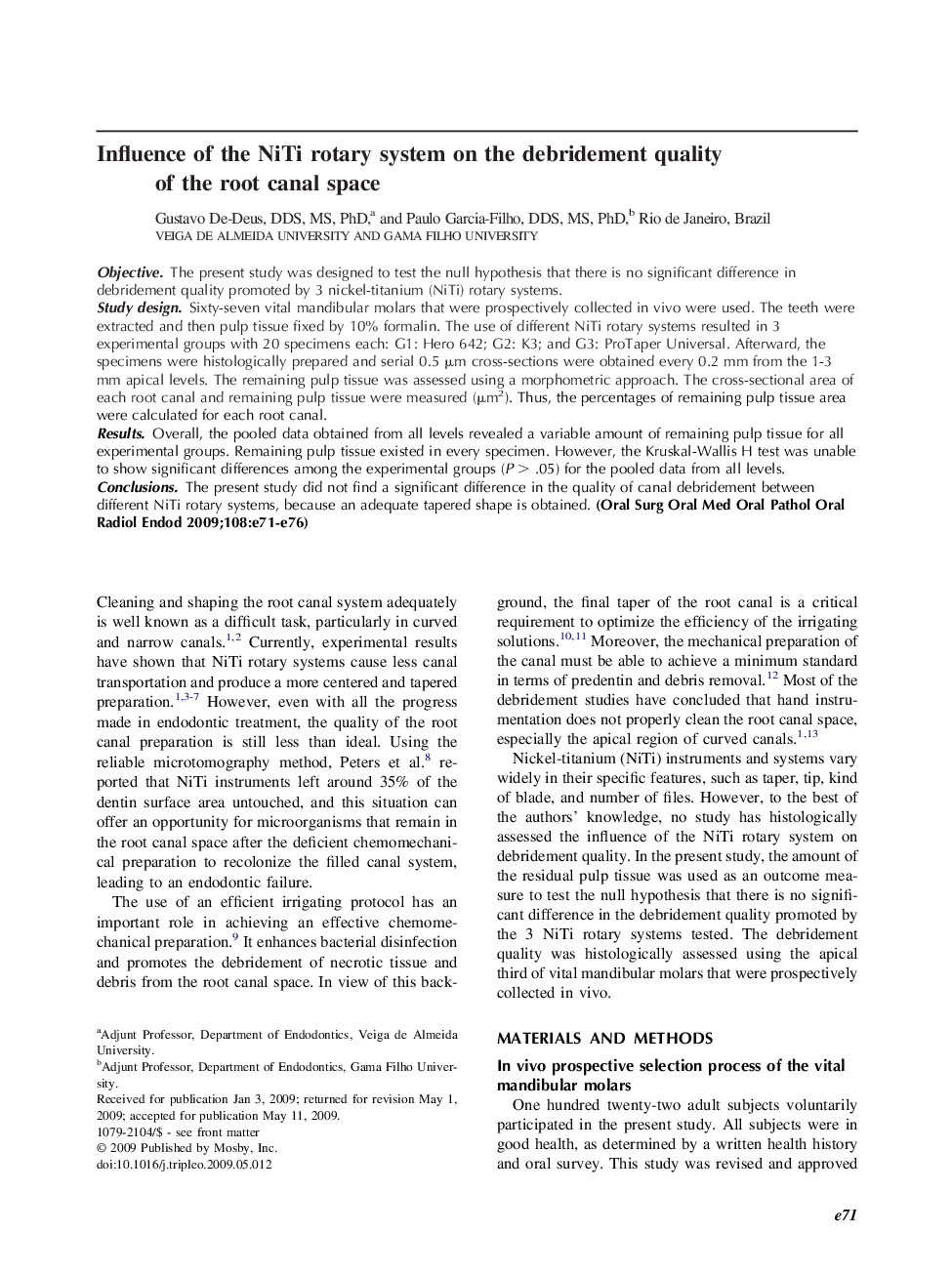| Article ID | Journal | Published Year | Pages | File Type |
|---|---|---|---|---|
| 3167944 | Oral Surgery, Oral Medicine, Oral Pathology, Oral Radiology, and Endodontology | 2009 | 6 Pages |
ObjectiveThe present study was designed to test the null hypothesis that there is no significant difference in debridement quality promoted by 3 nickel-titanium (NiTi) rotary systems.Study designSixty-seven vital mandibular molars that were prospectively collected in vivo were used. The teeth were extracted and then pulp tissue fixed by 10% formalin. The use of different NiTi rotary systems resulted in 3 experimental groups with 20 specimens each: G1: Hero 642; G2: K3; and G3: ProTaper Universal. Afterward, the specimens were histologically prepared and serial 0.5 μm cross-sections were obtained every 0.2 mm from the 1-3 mm apical levels. The remaining pulp tissue was assessed using a morphometric approach. The cross-sectional area of each root canal and remaining pulp tissue were measured (μm2). Thus, the percentages of remaining pulp tissue area were calculated for each root canal.ResultsOverall, the pooled data obtained from all levels revealed a variable amount of remaining pulp tissue for all experimental groups. Remaining pulp tissue existed in every specimen. However, the Kruskal-Wallis H test was unable to show significant differences among the experimental groups (P > .05) for the pooled data from all levels.ConclusionsThe present study did not find a significant difference in the quality of canal debridement between different NiTi rotary systems, because an adequate tapered shape is obtained.
